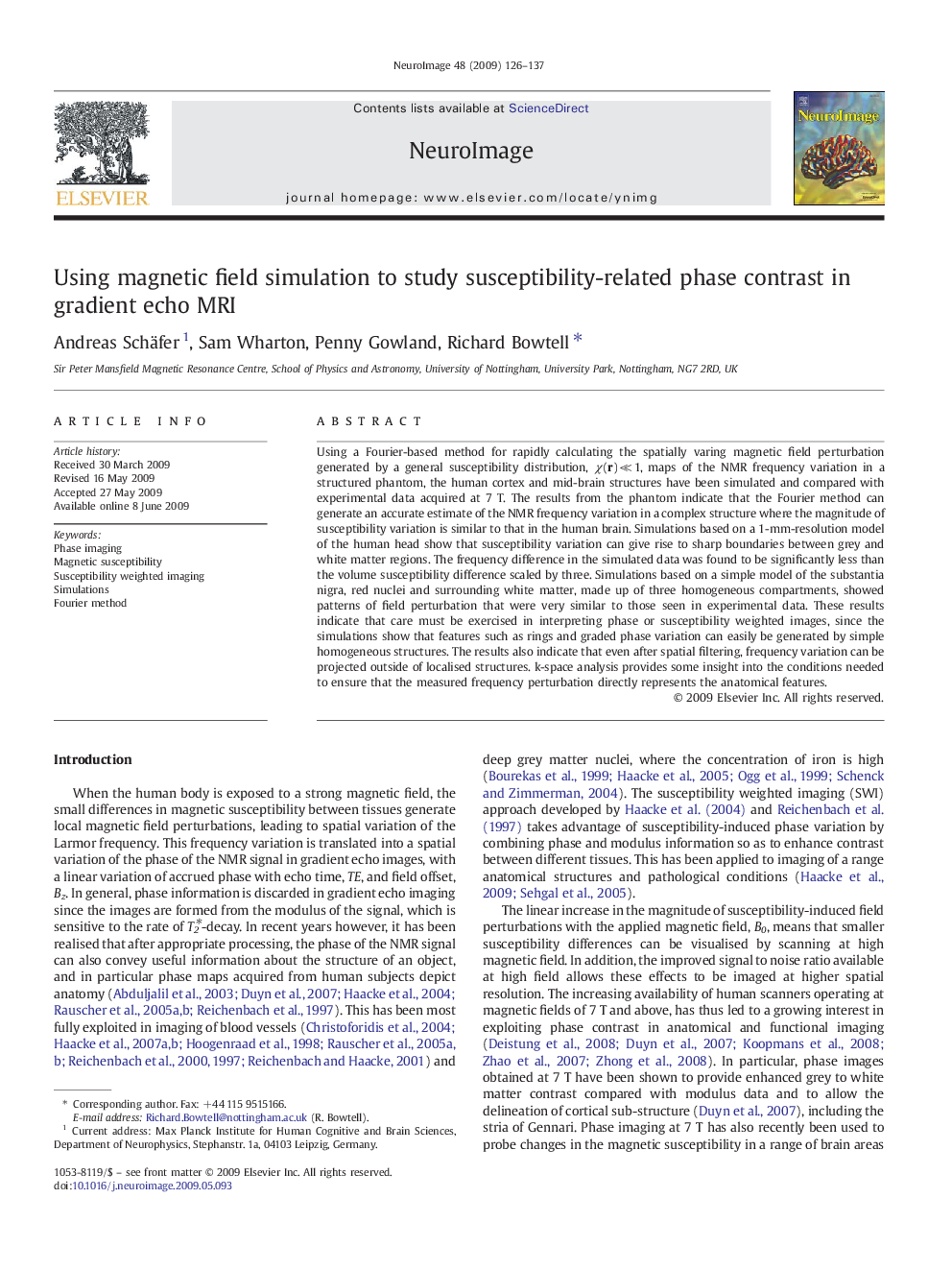| Article ID | Journal | Published Year | Pages | File Type |
|---|---|---|---|---|
| 3072665 | NeuroImage | 2009 | 12 Pages |
Using a Fourier-based method for rapidly calculating the spatially varing magnetic field perturbation generated by a general susceptibility distribution, χ(r) ≪ 1, maps of the NMR frequency variation in a structured phantom, the human cortex and mid-brain structures have been simulated and compared with experimental data acquired at 7 T. The results from the phantom indicate that the Fourier method can generate an accurate estimate of the NMR frequency variation in a complex structure where the magnitude of susceptibility variation is similar to that in the human brain. Simulations based on a 1-mm-resolution model of the human head show that susceptibility variation can give rise to sharp boundaries between grey and white matter regions. The frequency difference in the simulated data was found to be significantly less than the volume susceptibility difference scaled by three. Simulations based on a simple model of the substantia nigra, red nuclei and surrounding white matter, made up of three homogeneous compartments, showed patterns of field perturbation that were very similar to those seen in experimental data. These results indicate that care must be exercised in interpreting phase or susceptibility weighted images, since the simulations show that features such as rings and graded phase variation can easily be generated by simple homogeneous structures. The results also indicate that even after spatial filtering, frequency variation can be projected outside of localised structures. k-space analysis provides some insight into the conditions needed to ensure that the measured frequency perturbation directly represents the anatomical features.
